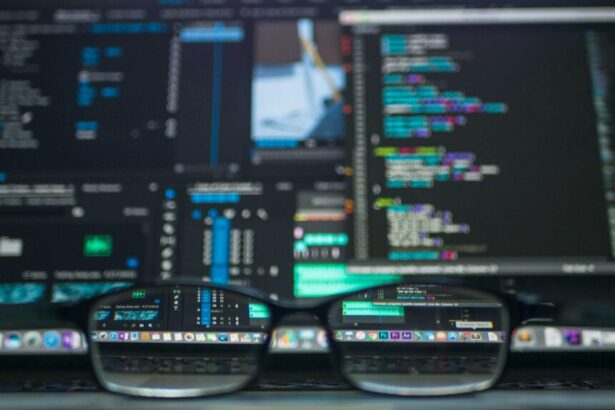Top Software Development Life Cycle Trends in 2025: Insights from an Experienced Technology Consultant
As an experienced technology consultant with over 15 years in the field, I’ve witnessed the software development life cycle (SDLC) evolve from rigid waterfalls to dynamic, iterative models. In 2025, the software development life cycle trends in 2025 are poised to revolutionize how teams build, deploy, and maintain applications. Driven by AI, security imperatives, and sustainability demands, these trends promise efficiency gains of up to 40%, according to Gartner’s 2024 forecast. This article breaks down the top five trends, complete with step-up strategies, real examples, a checklist, and FAQs to guide your adoption.
- 1. AI-Driven Automation Across the SDLC
- 2. DevSecOps: Security as a Core SDLC Pillar
- 3. Rise of Low-Code/No-Code Platforms Low-code/no-code (LCNC) platforms democratize development, enabling non-technical users to build apps 10x faster, according to Gartner’s 2024 Magic Quadrant. By 2025, LCNC will power 65% of app development, freeing developers for complex tasks. Step-up Strategies: Pilot with citizen developers: Assign business analysts to prototype using Mendix or OutSystems. Hybridize with custom code: Blend LCNC for front-end with traditional coding for backend logic. Monitor governance: Implement audits to ensure compliance and scalability. Siemens’ use of LCNC reduced their app development costs by 40%, allowing focus on IoT innovations. This trend aligns with open-source ecosystems; for more, see our Top Open-Source Software Trends in 2025. 4. Sustainable and Green SDLC Practices
- 5. Agile Evolution: Towards Hyper-Agile and Continuous Delivery
- Checklist for Adopting 2025 SDLC Trends
- FAQs on Software Development Life Cycle Trends in 2025
1. AI-Driven Automation Across the SDLC
Artificial intelligence is no longer a buzzword; it’s the backbone of modern SDLC. By 2025, AI will automate 70% of testing and code generation tasks, per Statista’s 2024 AI in Software Development report. This shift reduces human error and accelerates time-to-market from months to weeks.
Step-up Strategies:
- Integrate AI tools early: Start in the planning phase using predictive analytics to forecast project risks.
- Train teams on AI ethics: Ensure bias detection in algorithms to maintain trust.
- Scale with APIs: Leverage platforms like GitHub Copilot for real-time code suggestions.
A real example is Google’s DeepMind integration, which cut debugging time by 30% in their Android development pipeline. For teams eyeing cloud-native apps, consider insights from our Top SaaS Development Trends in 2025 article, which highlights AI’s role in scalable architectures.
2. DevSecOps: Security as a Core SDLC Pillar
With cyber threats rising 15% annually (per Cybersecurity Ventures, 2024), DevSecOps embeds security into every SDLC phase. In 2025, 80% of enterprises will adopt this model, says Forrester, shifting from reactive fixes to proactive defenses.
Step-up Strategies:
- Automate vulnerability scans: Use tools like Snyk to integrate security checks in CI/CD pipelines.
- Foster cross-functional teams: Combine devs, ops, and security pros for seamless collaboration.
- Adopt zero-trust models: Verify every access request, reducing breach risks by 50%.
Netflix exemplifies this with their Chaos Engineering practices, where simulated failures during deployment have prevented major outages. To enhance version control in secure environments, explore best practices in our Top Git and Version Control Best Practices in 2025.
3. Rise of Low-Code/No-Code Platforms
Sustainability is imperative as software’s carbon footprint rivals aviation (Green Software Foundation, 2024). In 2025, green software development trends 2025 will emphasize energy-efficient coding, with 50% of firms adopting eco-friendly SDLC per Deloitte.
Step-up Strategies:
- Optimize code efficiency: Use algorithms that minimize CPU cycles, like Rust over Python for performance-critical apps.
- Choose green hosting: Migrate to carbon-neutral clouds like AWS Greengrass.
- Measure impact: Track emissions with tools like the Cloud Carbon Footprint calculator.
Microsoft’s commitment to carbon-negative operations by 2030 includes SDLC tweaks, such as AI-optimized deployments that slashed energy use by 20%. Languages like Rust, topping high-paying job lists, support this—details in our Top 10 Programming Languages for High-Paying Jobs in 2025.
5. Agile Evolution: Towards Hyper-Agile and Continuous Delivery
Agile matures into hyper-agile frameworks, incorporating real-time feedback loops. IDC predicts 75% of teams will use AI-enhanced agile by 2025, boosting delivery speed by 35%.
Step-up Strategies:
- Implement swarm teams: Small, autonomous groups for rapid iterations.
- Leverage value stream mapping: Identify bottlenecks for continuous improvement.
- Integrate customer analytics: Use data from tools like Jira to pivot dynamically.
Spotify’s squad model has scaled agile to thousands, maintaining innovation velocity. For specialized domains like gaming, where agile meets creativity, check our Top Game Development Trends to Watch in 2025.
Checklist for Adopting 2025 SDLC Trends
To ensure smooth integration, use this SDLC trends implementation checklist 2025:
- [ ] Assess current SDLC maturity with a Gartner-like audit.
- [ ] Select 2-3 trends based on business goals (e.g., AI for speed, DevSecOps for compliance).
- [ ] Train 80% of the team via workshops (target: 4-6 weeks).
- [ ] Pilot on a low-risk project, measuring KPIs like deployment frequency.
- [ ] Scale with feedback loops, aiming for 20% efficiency gain quarterly.
- [ ] Review sustainability metrics annually.
- [ ] Document ROI, citing data like Statista benchmarks.
FAQs on Software Development Life Cycle Trends in 2025
1. What is the biggest SDLC trend for 2025?
AI-driven automation tops the list, automating up to 70% of routine tasks and enhancing productivity, as per Statista.
2. How does DevSecOps impact SDLC timelines?
It integrates security without slowing processes, potentially reducing breach-related delays by 50%, according to Forrester.
3. Are low-code platforms suitable for enterprise-scale apps?
Yes, with hybrid approaches; companies like Siemens prove they scale while cutting costs by 40%.
4. Why focus on green SDLC practices?
Software’s environmental impact is massive; adopting them aligns with regulations and reduces energy costs by 20%, per Deloitte.
5. How can teams transition to hyper-agile?
Start with value stream mapping and AI tools for feedback, targeting 35% faster deliveries as forecasted by IDC.
In conclusion, embracing these top SDLC trends 2025 isn’t optional—it’s essential for competitive edge. As your consultant, I recommend starting with an audit to tailor these to your needs. With strategic implementation, your organization can achieve resilient, efficient software lifecycles.






